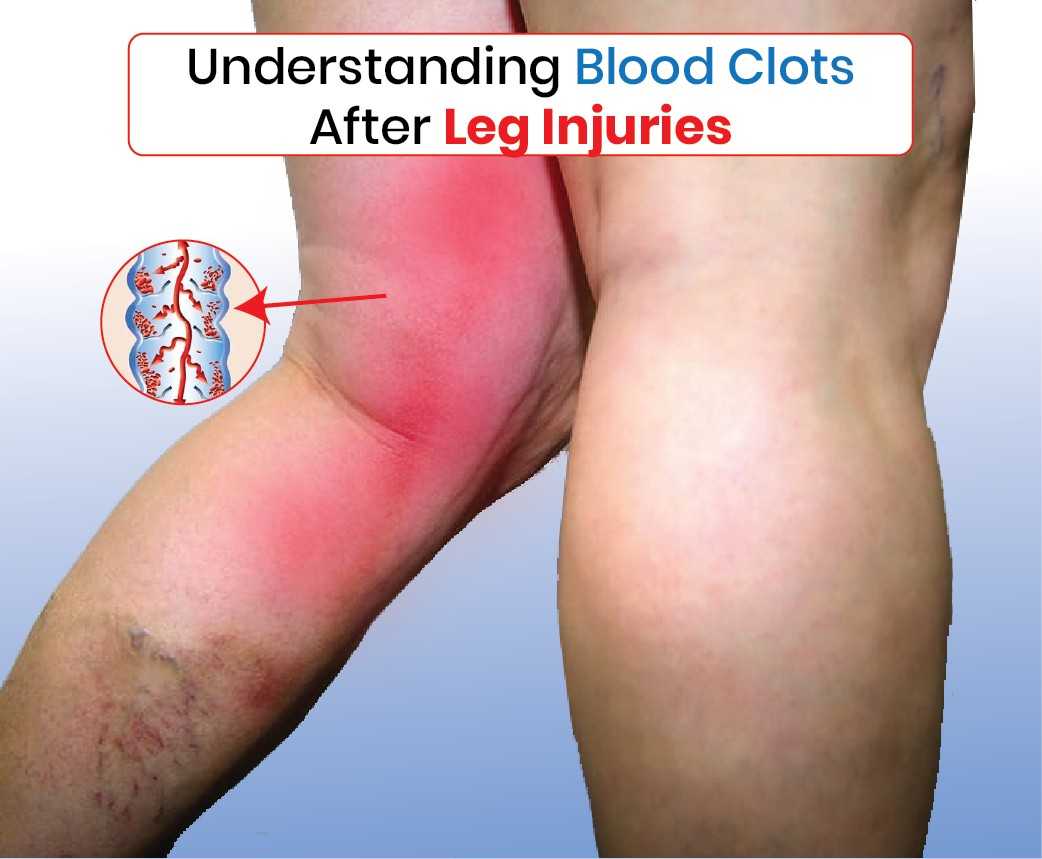Injuries to the legs are not uncommon, whether from accidents, sports activities, or everyday mishaps. While the immediate concern often revolves around treating the injury itself, there’s another hidden danger that can arise: blood clots. Here we will discuss the connection between leg injuries and blood clots, explore the potential complications, and describe effective treatment strategies.
The Link Between Leg Injuries and Blood Clots:
When a leg sustains an injury, especially one that involves damage to blood vessels or prolonged immobility, the risk of blood clot formation increases. The body’s natural response to injury is to initiate clotting to stop bleeding and promote healing. However, if blood flow is impaired due to the injury or if the individual remains immobile for an extended period, the conditions become ripe for clot formation.
Understanding Complications:
The most concerning complication of blood clots after leg injuries is deep vein thrombosis (DVT). DVT occurs when a blood clot forms in one of the deep veins of the legs. This can lead to symptoms such as pain, swelling, and warmth in the affected leg. However, the danger doesn’t end there. If a clot breaks loose and travels through the bloodstream to the lungs, it can cause a pulmonary embolism (PE), a life-threatening condition characterized by symptoms such as chest pain, shortness of breath, and rapid heartbeat.
Additionally, individuals who have experienced DVT are at risk of developing post-thrombotic syndrome (PTS). PTS can manifest as chronic pain, swelling, and discoloration in the affected leg, along with skin changes such as ulcers and thickening. These complications can significantly impact an individual’s quality of life and may require long-term management.
Effective Treatment Strategies:
Treatment for blood clots resulting from leg injuries focuses on preventing clot formation, reducing the size of existing clots, and minimizing the risk of complications. Some common approaches include:
- Anticoagulant Medications: Blood thinners such as heparin or warfarin are often prescribed to prevent the formation of new blood clots and reduce the risk of existing clots growing larger. These medications work by inhibiting the body’s clotting mechanism.
- Compression Therapy: Wearing compression stockings or bandages can help improve blood flow in the legs, reducing the risk of clot formation and alleviating symptoms such as swelling and pain.
- Mobility and Exercise: Encouraging movement and regular exercise can help prevent blood from pooling in the legs and reduce the risk of clot formation. Simple activities such as walking or flexing and extending the feet while seated can be beneficial.
- Elevating the Leg: Keeping the injured leg elevated above the level of the heart can help reduce swelling and improve blood flow, thus decreasing the risk of clot formation.
- Thrombolytic Therapy: In severe cases where a clot is large or causing significant symptoms, thrombolytic therapy may be used to dissolve the clot more rapidly. This involves the administration of medications that break down the clot.
If you have experienced a leg injury and suspect you may have a blood clot, it is essential to seek medical attention promptly for evaluation and treatment. At Avis Vascular center we help you take proactive measures and by following your doctor’s guidance, you can minimize the risk of complications and promote optimal recovery. Call, and talk to our experts today.




